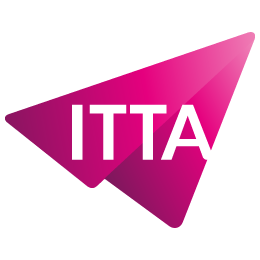Home > Trainings > Office Automation > Office Automation Certifications > ICDL STANDARD – Using databases – SM1
This course, “ECDL STANDARD – Using Databases – SM1,” provides a clear and practical understanding of how a database works. You will learn to organize, store, and manage information efficiently while developing the essential skills needed for everyday data handling.
The ECDL database training helps you understand how a database is built, structured, and maintained. You will explore the relationships between tables, records, and fields, as well as the core principles of database design and organization. Through a step-by-step approach, you will learn to create your own tables, filter and sort data, build precise queries, and produce professional reports.
Preparing for the ECDL Standard certification allows you to officially validate your knowledge in data management. This course focuses on the practical skills most valuable in the workplace. Whether you are a beginner or an experienced user looking to strengthen your foundation, you will learn to handle data methodically and accurately. By the end of the training, you will not only be able to create and manage a simple database but also fully leverage its potential to enhance your daily tasks and the quality of your analyses.
Using the Application
Module 1: Working with Presentations
Module 2: Enhancing Productivity
Developing a Presentation
Module 1: Presentation Views
Module 2: Slides
Module 3: Master Slide
Text
Module 1: Handling Text
Module 2: Formatting
Module 3: Tables
Charts
Module 1: Using Charts
Module 2: Organisation Charts
Graphical Objects
Module 1: Insert, Manipulate
Module 2: Drawing
Prepare Outputs
Module 1: Preparation
Module 2: Check and Deliver
In a world where organizations depend on ever-increasing volumes of data, knowing how to structure and efficiently use that information has become essential. A database is not just a storage tool; it is a true system for organizing knowledge. This ECDL Standard training provides a practical understanding of these mechanisms and teaches you the best practices in data management. You will learn how to organize, secure, and enhance your information to better serve your professional activity.
Before creating a database, it is crucial to understand its logic. Each element—tables, fields, and records—must be designed coherently. A clear structure makes maintenance easier and avoids duplication. You will learn how to model information, define meaningful relationships, and select appropriate data types. These skills enable you to build a powerful and sustainable database that can evolve with your professional needs.
A reliable database is built on simple principles: logical structure, field validation, and referential integrity. The course guides you through applying these concepts to prevent input errors and ensure data accuracy. You will also discover how to use queries to analyze your information precisely and extract actionable insights in just a few clicks. These techniques strengthen both consistency and traceability—two essential qualities in any professional environment.
The true value of a database lies in its ability to deliver the right information at the right time. You will learn to sort, filter, and search specific records efficiently. With these skills, you can generate reliable and relevant reports for your team or clients. Forms will help you simplify data entry and updates, making every action faster, smoother, and more secure. These methods significantly improve productivity in your daily data management tasks.
This course teaches you how to produce professional reports that make data easier to read and interpret. You will explore formatting options, grouping, and automatic calculations. Mastering these reporting tools transforms your database into a genuine decision-making resource. In the workplace, this skill is highly valued as it enhances responsiveness and the quality of strategic analyses.
The ECDL Standard certification officially recognizes your competence in using databases. It validates your ability to structure, query, and manage digital information effectively. This international credential is a real asset on the job market. Employers appreciate its credibility, as it demonstrates practical technical skills and a methodical approach to data management. It also represents a mark of professionalism for anyone seeking to prove their ability to work accurately and efficiently.
The skills acquired in this course are applicable across many fields. Whether you work in administration, finance, communication, or logistics, database management is a universal need. The ECDL Standard training allows you to create and manage data independently, without constant technical support. You gain efficiency and accuracy while contributing to the overall improvement of your organization’s internal processes.
The strength of this course lies in its balance between theory and practice. You will understand the principles of database design and immediately apply them to real-world scenarios. The goal is not only to pass the ECDL exam but also to truly integrate these skills into your daily work. This hands-on approach makes the training engaging, accessible, and directly applicable to your professional responsibilities.
Is this course suitable for beginners?
Yes, it is designed for anyone with basic ECDL knowledge. Concepts are presented clearly and progressively.
What are the concrete benefits of mastering a database?
It helps you organize information better, avoid duplication, and produce reliable analyses for informed decision-making.
How is the ECDL Standard certification recognized?
ECDL is an internationally recognized benchmark that validates essential digital skills. It enhances your profile among employers and business partners.
Does the course include practical exercises?
Yes, each module includes hands-on activities that allow you to immediately apply what you learn to real database scenarios.
Which types of jobs can benefit from this training?
Administrative assistants, data managers, analysts, and anyone looking to improve their information management skills will benefit from this training.

Nous utilisons des cookies afin de vous garantir une expérience de navigation fluide, agréable et entièrement sécurisée sur notre site. Ces cookies nous permettent d’analyser et d’améliorer nos services en continu, afin de mieux répondre à vos attentes.
Monday to Friday
8:30 AM to 6:00 PM
Tel. 058 307 73 00
ITTA
Route des jeunes 35
1227 Carouge, Suisse
Monday to Friday, from 8:30 am to 06:00 pm.